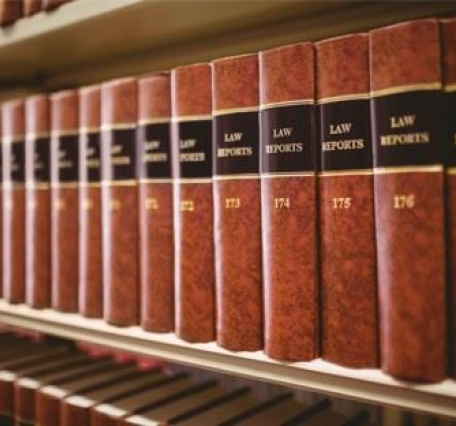

T 190/21 - Apparent broadening of a granted claim not necessarily an extension of scope of protection
Background
The appellant-proprietor (A) appealed the decision of the opposition division (OD) to revoke the European patent No. 2 741 400.
The OD had revoked the patent based on the ground for opposition under Art. 100(c) EPC prejudicing the maintenance of the patent as granted. Additionally, claim 1 of each of auxiliary requests I to XVII was found to contravene Art. 123(3) EPC. In particular, the OD found that the wording “perpendicular to the d-axis of the rotor” (emphasis added by the Board) in granted claim 1 extended beyond the application as filed and that the amended wording “perpendicular to the axis of the rotor” (emphasis added by the Board) in claim 1 of each auxiliary request extended the protection conferred by the patent as granted.
The Examining Division (ED) had proposed amending “axis” to “d-axis in the text intended for grant annexed to the communication under Rule 71(3) EPC. This amendment had been proposed to “better define the axis and to avoid confusion with the rotating axis of the rotor”.
The opponent (O) had withdrawn their opposition before the oral proceedings before the OD and were therefore no longer a party to the proceedings.
The Appeal
In the grounds of appeal, A filed a new main request along with new auxiliary requests I, II and XIIX. Auxiliary requests II to XVI and XVII, filed during the opposition proceedings, were renumbered as auxiliary requests III to XVII and XIX, respectively.
The A requested that the correction of “d-axis” in claim 1 of the patent as granted to “axis” in claim 1 of the main request should be allowed as a correction of an obvious error under Rule 139 EPC. If that was not possible, A requested that the amendment be admitted under Rule 80 EPC.
Correction of an obvious error – Rule 139 EPC
A requested that the amendment of “d-axis” (claim 1 as granted) to “axis” (claim 1 of the main request) be allowed as a correction of an obvious error under Rule 139 EPC.
The OD was of the opinion that it would not be obvious for a person skilled in the art that an error had occurred in granted claim 1 and that a correction under Rule 139 EPC was therefore not allowable.
Although the Board found that the reasons given by OD were not correct, the Board also came to the conclusion that the amendment of the main request could not be allowed as a correction of an obvious error under Rule 139 EPC.
Referring to G1/10, Reasons 9 to 11, the Board stated that Rule 139 EPC cannot be used to correct the content of the decision to grant, thereby circumventing the restrictions under Rule 140 EPC. The Board further referred to T 0506/16, Reasons 5, stating that Rule 139 EPC is only applicable to documents filed with the EPO and does not extend to documents issued by it, such as the decision to grant.
The Board therefore concluded that Rule 139 EPC could not provide a legal basis for allowing the amendment of claim 1 of the main request.
Amendment of the European patent – Rule 80 EPC
A requested that the amendment of claim 1 of the main request be allowed under Rule 80 EPC if correction under Rule 139 EPC is not possible.
The Board referred to G 1/10, Reasons 13, stating that a patent proprietor may always seek to amend his patent and that such amendment could remove a perceived error. The Board also referred to Art. 123(1) EPC, under which the European patent application or European patent may be amended in proceedings before the European Patent Office, in accordance with the Implementing Regulations, and to Rule 80 EPC, according to which the description, claims and drawings may be amended provided that the amendments are occasioned by a ground for opposition under Art. 100 EPC, even if that ground has not been invoked by the opponent.
The Board found that the amendment of claim 1 of the main request is clearly occasioned by the ground for opposition under Art. 100(c) EPC.
The Board therefore considers the amendment in the main request as a request for an amendment under Art. 123(1) EPC, which satisfies the requirement of Rule 80 EPC and which has to satisfy all the legal requirements for amendments including those of Art. 123 EPC.
Admissibility of amendment – Art. 123(2) EPC
Since the amendment from “d-axis” to “axis” in claim 1 of the main request restores the wording to the disclosure of the application as originally filed, the amendment meets the requirements of Art. 123(2) EPC.
No extension of protection conferred by the amendment – Art. 123(3) EPC
In the opposed decision, OD concluded that replacing the term “d-axis” by the term “axis” contravened Art. 123(3) EPC.
The Board however agrees with A that the protection conferred by claim 1 according to the main request is not extended by the amendment, and that claim 1 of the main request thus does not contravene Art. 123(3) EPC.
The Board states that for determining whether the protection conferred by amended claim 1 is extended, the protection conferred by granted claim 1 must be determined. The Board sets out determining the scope of protection of granted claim 1 while referring to Art. 69 EPC and the Protocol on Interpretation of Art. 69 EPC. This assessment is based on how the person skilled in the field of motor rotors would interpret the terminology of the claim requests. In particular the skilled person’s understanding of the terms “d-axis” and “axis” in the context of the claims, i.e., in respect of both the mechanical and the electrical/magnetic components in motor construction, is discussed.
The Board considers it clear from the overall context of claim 1, that claim 1 refers to the physical, i.e., mechanical, structure of the motor rotor and not to the electrical or magnetic properties of the rotor, and that this would have been recognized by the person skilled in the art. Therefore, although the term “d-axis” normally refers to a magnetic property of the rotor, the skilled person would have readily recognized that the wording “perpendicular to the d-axis of the rotor” in granted claim 1 does not refer to an axis in the magnetic system of the rotor, since this would be in complete contradiction with the overall wording of the claim and, in particular, because the rotor does not have a “d-axis” in the mechanical sense. The Board also notes that the claim does not contain any definition of the “d-axis” of the rotor.
The Board further points to the fact that this understanding of claim 1 is fully consistent with the description and drawings of the patent, which under Art. 69 EPC and the Protocol on Interpretation of Art. 69 EPC are to be used to determine the scope of protection.
Based on their assessment of the understanding of the person skilled in the art and the disclosure of the description and drawings, the Board summarises that when determining the protection conferred by granted claim 1, it is evident that the skilled person would have readily understood the expression "perpendicular to the d-axis of the rotor" to mean "perpendicular to the axis of the rotor". Consequently, for the skilled person the protection conferred by claim 1 as granted would have been what was originally disclosed, namely a motor rotor in which inter alia the permanent magnets have an arc-shaped cross-section perpendicular to the axis of the rotor.
The Board therefore concludes that the protection conferred by granted claim 1 is identical to the protection conferred by claim 1 according to the main request and which thus meets the requirement of Art. 123(3) EPC.
The Board therefore concludes that claim 1 according to the main request meets the requirement of Art. 123(2) EPC and does not contravene Art. 123(3) EPC.
Decision of the Board of Appeal
The contested decision is set aside, and the case is remitted to the opposition division for further prosecution.
More about EPO case: T 190/21




